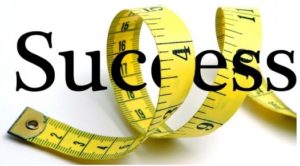If you want to go fast, go alone. If you want to go far, go together. ~African Proverb
 For some time now, my neighborhood has been under construction, one high rise after another. That means I walk around a construction site pretty much every day, and the construction process appears to be slow and arduous.
For some time now, my neighborhood has been under construction, one high rise after another. That means I walk around a construction site pretty much every day, and the construction process appears to be slow and arduous.
I first start receiving legal notices in the mail from the developer’s attorney, a requirement for anyone owning property within 250 feet of any construction. There is typically some type of informational meeting to describe the zoning changes, offer up any concerns, etc. Once they have all the legalities in order, they bulldoze what currently exists, that always seems to happen quickly.
Then the new construction begins. Just imagine a high rise 30+ stories high and each additional floor is exactly the same as the previous floor. The change process seems measured, meticulous, and detailed, but the final product is stunning and adds a striking complement to the Chicago skyline.
The construction process parallels change efforts in organizations. Everyone is informed of the change and why it’s necessary, there are probably various informational meetings. Followed by a “bulldozing” of what currently exists, whether it’s processes, cultural attributes, services, products, programs, etc. Then the “new construction” begins, replacing what previously existed.
Here’s where I think leaders can really learn from high rise construction. Building anything new will likely be a slow, meticulous, and a detailed process. It may even feel repetitive, much like adding one identical floor after another on a high rise.
I believe many leaders become impatient with change efforts. Using the construction metaphor, they want to go from bulldozing to completed high rise almost instantly. That’s just as unrealistic for organizational change as it is for high rise construction. Change requires time, discipline, and patience. Below are five attributes that I believe are critical for any leader who is hoping to lead real and lasting change.
- Communicate, communicate, communicate clearly, completely, and often.
- Listen, not just at the onset of the change effort, but continuously until completion and the change has been fully instituted.
- Empathize with those who are being asked to change, put yourself in their shoes and demonstrate that you understand their struggles.
- Credibility will go a long way toward creating a smooth change process – consistently do what you say you will do.
- Take on a project management orientation – establish clear goals, objectives, timelines, specific actions, and manage the process, beginning to end.
Sure, you might be able to make small changes in your organization quickly (i.e., go fast and go alone). But if you want to create significant change (i.e., go far), then you need to go together and that requires communication, listening, empathizing, credibility, and a plan to manage the process.



